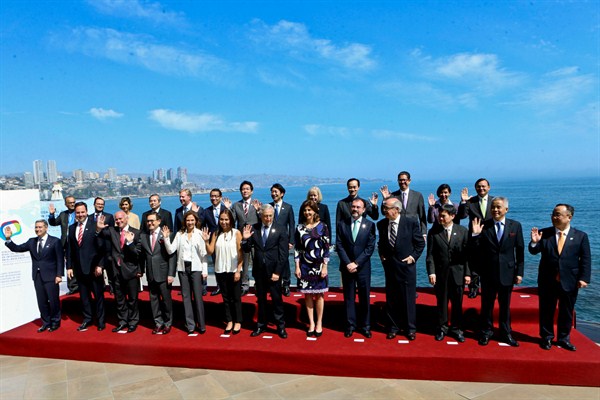While much about U.S. President Donald Trump’s trade policy remains uncertain, his official 2017 “trade policy agenda,” released on March 1, clearly stated the preference for bilateral over multilateral negotiations. Echoing what he said during the election campaign, the trade agenda also emphasized national sovereignty and the enforcement of U.S. trade laws. Trump’s focus on bilateralism, however, comes with real costs. Bilateral negotiations are time-consuming and entail significant negotiating resources. Even when “successful” in narrow market access terms, firms can incur significant transaction costs from having to navigate the resulting tangle of inconsistent or conflicting rules.
Multilateral trade rules—such as those embodied in the World Trade Organization or in broad regional agreements like the Trans-Pacific Partnership, or TPP, that Trump quickly pulled the U.S. out of—bring more predictability and continuity to trade relations. With respect to one of America’s most important exports, digital trade, bilateral trade talks simply would not be useful because of the crisscrossing nature of global information flows. The platform for facilitating those information flows—the internet—is designed to be universal, open and global. That is why the system of rules governing trade in information flows needs to be global, as well.
Global information flows via the internet facilitate trade in ideas, services, data and other products. Businesses rely on these flows to access and manage markets and supply chains, and to enable transactions around the world. Individuals rely on these flows for information, to communicate with family, friends and colleagues, and also to access markets. Cross-border data flows are a key component of trade in information, goods and other services online. According to the McKinsey Global Institute, this digital trade is the fastest-growing component of world trade, and more than 10 percent of global trade in goods was conducted via e-commerce platforms in 2014. The WTO’s 2016 World Trade Report also highlighted the role of e-commerce in facilitating increased trade by small and medium-sized enterprises, which account for roughly half of U.S. employment and more than that in most countries.

